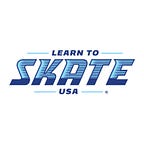Skating at 60: Practice, Practice, Practice
While I don’t expect to be perfect, I do know the secret to improving my skating ability.
EDITOR’S NOTE: For her 60th birthday, Mary Ullmer bought a pair of ice skates to rekindle the joy of recreational skating in her youth. A professional journalist whose career has spanned from her small hometown newspaper to her current job at ESPN, Ullmer will share her experiences as she goes through the Learn to Skate USA program.
How do you get to Carnegie Hall?
Practice!
While I have no plans to suddenly become a music virtuoso, I know the only way to get better at something — anything — is to practice. Playing sports in my youth, whether softball or volleyball, required hours upon hours of practice. And in many cases, at some point, muscle memory kicks in. The body remembers how to execute, even if the mind forgets.
So it is with ice skating. I’m now two lessons into my Learn to Skate USA® program, and I’ve acquired some of the basic skills and even a little bit of confidence. Our second class began with us practicing the skills we learned on Day 1, honing the techniques and repeating them until they become somewhat natural. While I don’t think anyone in my group is proficient just yet (myself included), there was definite improvement over our first lesson. Thankfully, our coach, Brandi, had us practice falling and getting back up only once (I still struggle with this one) before we moved on to actual skating.
And once we practiced our skating, muscle memory definitely kicked in. When Brandi instructed us to “swizzle” across the ice to the other side, the muscles around my shins remembered how painful this exercise was for someone my age who’s relatively out of shape. If you’re unfamiliar with a forward swizzle, I found a nifty video online.
The move requires you to first put the heels of your skates together, while bending your knees slightly, arms spread out to maintain balance. Next, push your blades outward and slightly forward, then bring your toes together at the top to end the move. This approach, more difficult than it appears (especially on those shin muscles), propels you forward.
To ensure we got the routine down, Brandi required us to do eight swizzles in a row, without stopping. Across the ice we went, some faster and more smoothly than others. My shins were more than happy to get to the other side and rest against the boards. We then were instructed to swizzle back again. Fair enough. Practice makes perfect.
My shins held up, and I was ready to move on to another skill. Brandi, however, was not. We were tasked with swizzling back and forth across the ice two more times! My shins were screaming, but I was glad to see I wasn’t the only one in pain. A young boy near me, who was putting up a valiant effort, shouted, “it hurts!” as he swizzled along. Muscles burning, I encouraged him to keep going. The other side of the ice was within reach, and we both made it.
Next: Wiggles. With feet somewhat together, we wiggled our hips back and forth, thrust ourselves backward on the ice. For those old enough to remember, think Chubby Checker on skates. Oddly, I found wiggles and skating backward to be less painful and even easier than forward swizzles.
Finally, we moved on to skating in the way most people picture it: Forward propulsion by pushing off with one foot, then gliding on the other. While there were a lot of spills, we were, for the most part, skating.
Alas, by the time we reached this point and practiced it a few times, our 45-minute lesson was ending and we took our victory lap to end the session.
I wanted to remember these skills and, in an effort to get my muscles to cooperate, I decided to do what anyone would do to improve: Practice. I learned via the Google machine that Lakeshore Sports Center, where our lessons are held, has open skating a few times a week.
Wednesday, I plopped down my $10 and hit the ice. There were only two other women, who looked to be slightly younger than me, on the rink. It was obvious one of them was a natural. She glided across the ice gracefully — in hockey skates, I might add — zipping around with ease. Watching her gave me confidence. I picked up my speed and, somewhat awkwardly, made my way around the rink. The woman, whose name I learned was Carrie, hollered to me, “Bend your knees! It will help you with your center of gravity!”
I was thankful for her advice and even asked her for another tip: How do I stop? Brandi had shown us a way, but I seemed to have difficulty. My way of stopping instead was to simply glide until I had no glide left, then grab onto or run into the boards. Carrie was more than happy to illustrate for me. She skated around and came to a stop near me so I could watch her feet. She looked like a professional hockey player, somehow dragging her rear foot to bring herself to a dead stop, kicking up a little spray.
When I tried this incredibly cool looking move, I landed on my butt (though I did remember to fall to the side, as Brandi had taught us on Day 1). I don’t expect to stop like Carrie anytime in the near future. But it’s my hope that I will learn to come to a halt without running into the boards.
How? Practice.
Maybe I’ll make it to Carnegie Hall after all.
